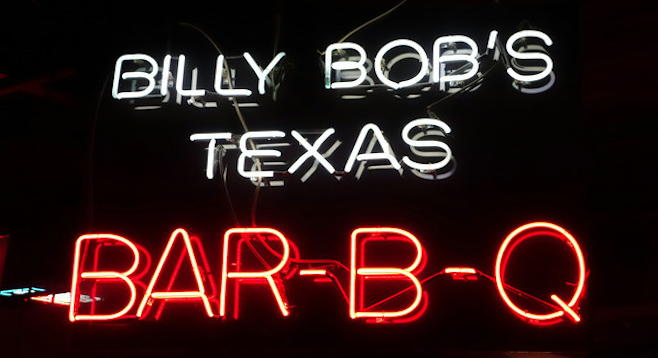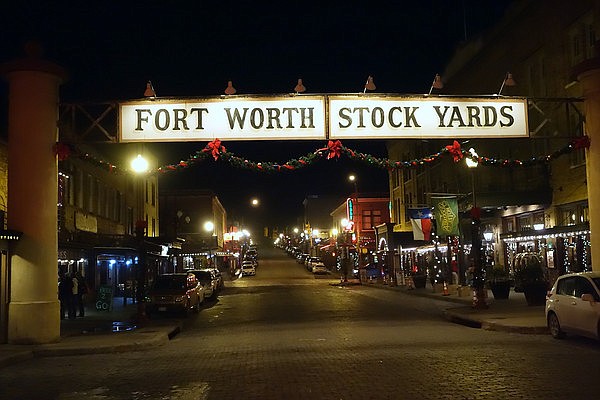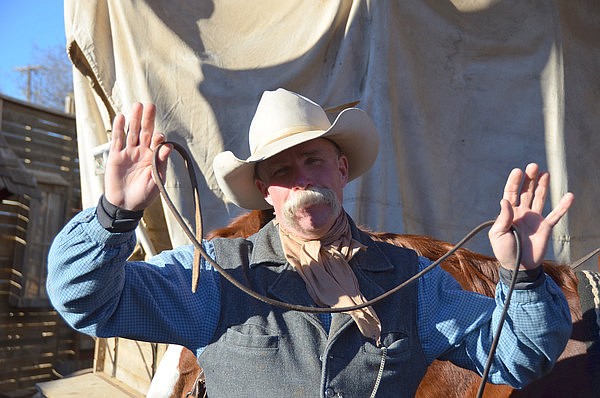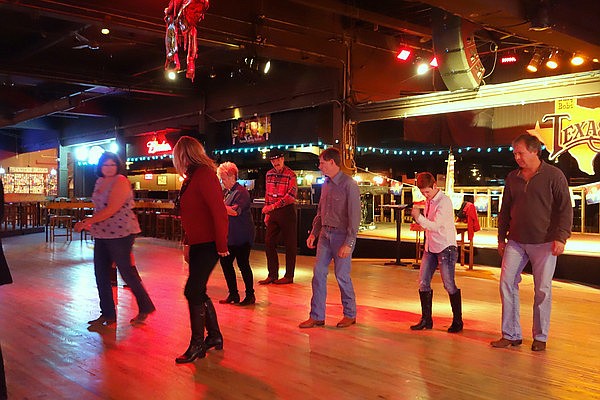 Facebook
Facebook
 X
X
 Instagram
Instagram
 TikTok
TikTok
 Youtube
Youtube


Cowboy culture is alive and well in Fort Worth, a city of about 775,000 just to the west of Dallas (and often lumped in the same metropolitan area). Fort Worth's a colorful composite of cattle drives, railroads, Western music, hats and saddles, rodeos, and modern-day saloons. Ride a horse, buy a cowboy hat and handmade boots, and eat some of the best BBQ in Texas.
That's exactly what I intended to do when I targeted the famous Stockyards National Historic District in Fort Worth for my fix of Western immersion. After all, the best place to start any visit to Fort Worth is where the past meets the present. Besides, I wanted to showcase my hat and boots in a way that only Texans can truly appreciate.
I was pleased to discover that the Stockyards District is almost a destination unto itself. Here I found a twice-daily cattle drive herded through the streets of town, driven by drovers with manners. One of the friendly fellas on horseback even greeted me with a “G’day ma'am, how r ya doing?”

I listened to a variety of languages and accents around me as I jockeyed my way into position for photos of the longhorns. The ones I could distinguish were German, French, Spanish and Japanese, with some Eastern European tongues sprinkled in that I didn’t recognize. I guess the draw is that the Wild West is so uniquely American. There's nothing like it anywhere else.
After getting my quintessential Western shots, I sauntered on over to the nearby Texas Cowboy Hall of Fame Museum. The museum “honors Texas men and women who have excelled in the sport and business of rodeo, and the western lifestyle.” Save time for the Sterquell Wagon Collection, the world’s largest collection of lifestyle wagons. Of note is the chuck wagon, first developed in the 1860s by Charles Goodnight. The cowboy’s “kitchen on wheels” was an integral part of cattle drives between South Texas and the Kansas railheads. Staples included salt pork, beans, coffee, and sometimes sourdough bread and any wild game caught along the trail.
Naturally, I saved time for some retail therapy – there are quite a few one-of-a-kind and boutique shops in the Stockyard District. Get a pair of custom-made boots or even a saddle at M.L. Leddy’s. Shop at Maverick Fine Western Wear for clothing fit for urban cowboys and cowgirls. Or get your hat custom-steamed at Fincher’s White Front Western Wear.

It was time for me to shuffle on over to the world famous Billy Bob’s Texas for some Texas two-steppin’ lessons. This is where you go to learn how to dance in what is billed as the “World’s Largest Honky Tonk.” The affable Wendell Nelson, a dance instructor at Billy Bob’s for over 20 years, teaches free line dance lessons every Thursday night at 7 pm. Nelson believes that “dancing is the most fun you can have standing up.”

A wildly popular country-western nightclub with a capacity of over 6,000 people, Billy Bob’s boasts 127,000 square feet for boot-scootin’ fun and has hosted legendary musicians like Willie Nelson, George Strait, Alan Jackson, Reba McEntire and Travis Tritt. It’s also home to a small indoor rodeo. Why ride a mechanical bull when you can witness the real thing?
All that boot scootin’ worked up my appetite, so I decided to go where the locals chow down for some of the best barbecue in town. Within walking distance, Cooper’s Old Time BBQ is famous for smoking meat with a dry rub. I was surprised how meaty and succulent the beef ribs are here – and, for that matter, all the smoked meats. The place isn’t fancy, more cafeteria-style with an ambiance I'd call local cowboy. (I counted over 25 cowboys and cowgirls dining with hats.)
I ordered just one beef rib after being told that they have a lot of meat, but I really didn’t believe the jargon. I ended up sharing half the rib with my son and had a baked potato, coated with the dry-rub, that didn’t even need butter!
Next, we moseyed on back to the heart of the historic stockyards (Exchange Ave.) for the best place in cowtown to down some suds: White Elephant Saloon. Here we found a bevy of cowboy hats all over the walls, a weird collection of white elephants, and a great selection of beer – along with live music, which happens seven nights a week. Besides it being Fort Worth’s most historic saloon and dancehall, I heard some chatter about it being the site of the “last great gunfight in Fort Worth.”



Cowboy culture is alive and well in Fort Worth, a city of about 775,000 just to the west of Dallas (and often lumped in the same metropolitan area). Fort Worth's a colorful composite of cattle drives, railroads, Western music, hats and saddles, rodeos, and modern-day saloons. Ride a horse, buy a cowboy hat and handmade boots, and eat some of the best BBQ in Texas.
That's exactly what I intended to do when I targeted the famous Stockyards National Historic District in Fort Worth for my fix of Western immersion. After all, the best place to start any visit to Fort Worth is where the past meets the present. Besides, I wanted to showcase my hat and boots in a way that only Texans can truly appreciate.
I was pleased to discover that the Stockyards District is almost a destination unto itself. Here I found a twice-daily cattle drive herded through the streets of town, driven by drovers with manners. One of the friendly fellas on horseback even greeted me with a “G’day ma'am, how r ya doing?”

I listened to a variety of languages and accents around me as I jockeyed my way into position for photos of the longhorns. The ones I could distinguish were German, French, Spanish and Japanese, with some Eastern European tongues sprinkled in that I didn’t recognize. I guess the draw is that the Wild West is so uniquely American. There's nothing like it anywhere else.
After getting my quintessential Western shots, I sauntered on over to the nearby Texas Cowboy Hall of Fame Museum. The museum “honors Texas men and women who have excelled in the sport and business of rodeo, and the western lifestyle.” Save time for the Sterquell Wagon Collection, the world’s largest collection of lifestyle wagons. Of note is the chuck wagon, first developed in the 1860s by Charles Goodnight. The cowboy’s “kitchen on wheels” was an integral part of cattle drives between South Texas and the Kansas railheads. Staples included salt pork, beans, coffee, and sometimes sourdough bread and any wild game caught along the trail.
Naturally, I saved time for some retail therapy – there are quite a few one-of-a-kind and boutique shops in the Stockyard District. Get a pair of custom-made boots or even a saddle at M.L. Leddy’s. Shop at Maverick Fine Western Wear for clothing fit for urban cowboys and cowgirls. Or get your hat custom-steamed at Fincher’s White Front Western Wear.

It was time for me to shuffle on over to the world famous Billy Bob’s Texas for some Texas two-steppin’ lessons. This is where you go to learn how to dance in what is billed as the “World’s Largest Honky Tonk.” The affable Wendell Nelson, a dance instructor at Billy Bob’s for over 20 years, teaches free line dance lessons every Thursday night at 7 pm. Nelson believes that “dancing is the most fun you can have standing up.”

A wildly popular country-western nightclub with a capacity of over 6,000 people, Billy Bob’s boasts 127,000 square feet for boot-scootin’ fun and has hosted legendary musicians like Willie Nelson, George Strait, Alan Jackson, Reba McEntire and Travis Tritt. It’s also home to a small indoor rodeo. Why ride a mechanical bull when you can witness the real thing?
All that boot scootin’ worked up my appetite, so I decided to go where the locals chow down for some of the best barbecue in town. Within walking distance, Cooper’s Old Time BBQ is famous for smoking meat with a dry rub. I was surprised how meaty and succulent the beef ribs are here – and, for that matter, all the smoked meats. The place isn’t fancy, more cafeteria-style with an ambiance I'd call local cowboy. (I counted over 25 cowboys and cowgirls dining with hats.)
I ordered just one beef rib after being told that they have a lot of meat, but I really didn’t believe the jargon. I ended up sharing half the rib with my son and had a baked potato, coated with the dry-rub, that didn’t even need butter!
Next, we moseyed on back to the heart of the historic stockyards (Exchange Ave.) for the best place in cowtown to down some suds: White Elephant Saloon. Here we found a bevy of cowboy hats all over the walls, a weird collection of white elephants, and a great selection of beer – along with live music, which happens seven nights a week. Besides it being Fort Worth’s most historic saloon and dancehall, I heard some chatter about it being the site of the “last great gunfight in Fort Worth.”
Comments